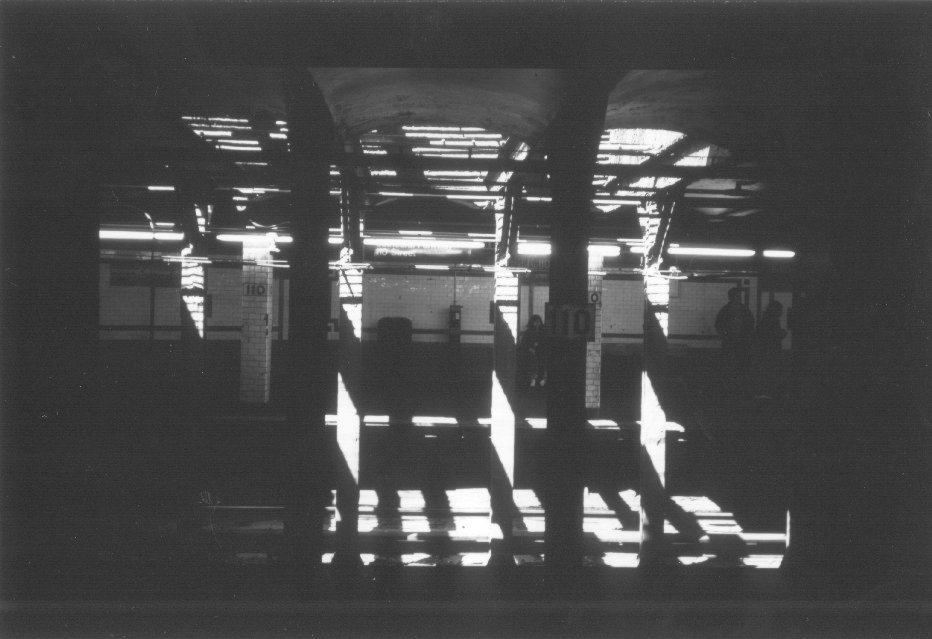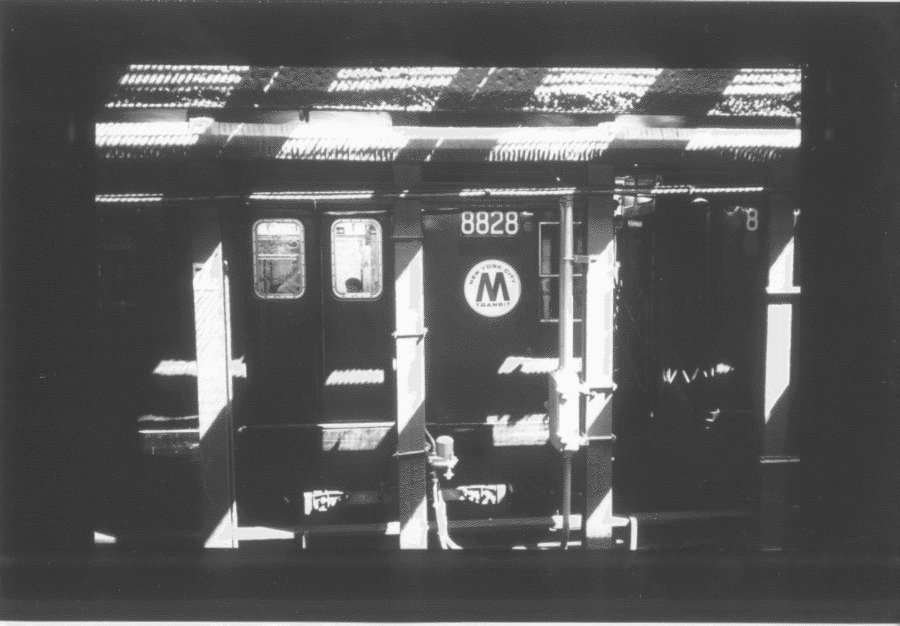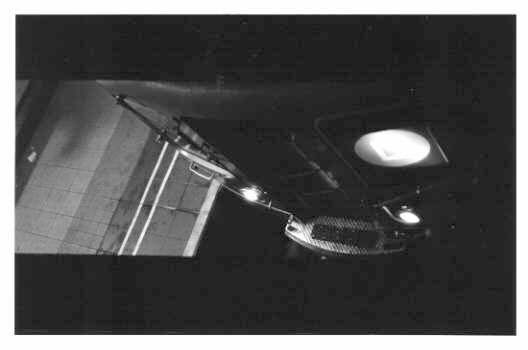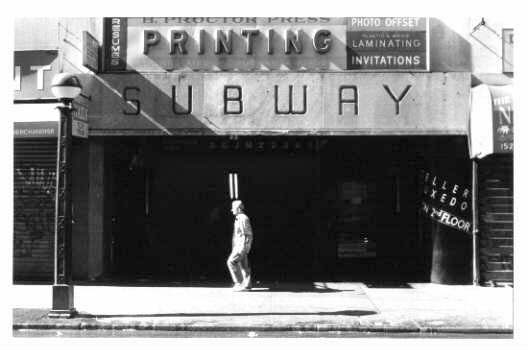The Poetics of Steel: Sunlight and Subway
From nycsubway.org
A photo essay by Tenryu Shin.
 I've always admired poetry for its ability to compact meaning. A
few sentences on the page generate a large chain reaction in the mind.
These photographs are about seeing more with less. As many trains are
several hundred feet long, it would be difficult to capture the
spectacle of seeing an entire train on film. So, I have focused on
little things that I've noticed or taken note of when I ride the
subway. I then tried to capture these details in a way that I felt
would accurately capture what I saw in my mind's eye. The other role
of these images was to make the viewer take pause and think about what
they were viewing.
I've always admired poetry for its ability to compact meaning. A
few sentences on the page generate a large chain reaction in the mind.
These photographs are about seeing more with less. As many trains are
several hundred feet long, it would be difficult to capture the
spectacle of seeing an entire train on film. So, I have focused on
little things that I've noticed or taken note of when I ride the
subway. I then tried to capture these details in a way that I felt
would accurately capture what I saw in my mind's eye. The other role
of these images was to make the viewer take pause and think about what
they were viewing.
The unifying theme is steel. Steel boxes with holes punched out for windows and doors become cars, and two or more cars become trains. These trains run on steel wheels that ride on steel rails, the metal to metal contact creating fine steel dust that coats everything. The steel trains stop in stations supported above and below the streets by steel beams and steel columns.
When I began photographing the subway, I was taken aback by look of surprise on many faces. They were surprised by a combination of things; that I was young (at least it appeared that way to them) and that I was Black. But most of all, they expressed surprise that anyone would find something worth photographing at all. I took this to be symbolic of how insidious anti-urbanism is. It has trickled down from the 19th century wealthy of the Industrial Revolution, who made the cities ugly, to the 20th century poor today, who receive most of the blame for the negative reasons of why cities are the way they are today. The perception of suburbia negates perception of the city. It's as if we can't see the city for the suburbs. For example, the sun travels 93 million miles to reach the Earth, but the additional 20 feet more it travels underground to reach subway stations is largely unrecognized. The perception of the subway is that it is dark and gloomy. Some would claim that they ride the line every day, and never noticed the sunlight or would argue on the authority of their experience that the sunlight never comes in. A homeless person asked me if I was photographing graffiti even though there was none present. These are perceptions of suburbia regurgitated by rote in the face of reality.
 Such perceptions are reinforced by photography. When photographers
like Walker Evans and Roy DeCarava (just to name a few) photograph the
subway, they primarily photograph subway riders. These photographs
are essentially portraiture, and the range of facial expressions is
usually limited to "weary and exhausted" and "malaise." From the
pictorial evidence, one would think that the subway consists only of
the people who ride it, and that the ride is always miserable.
Perhaps we get an idea of what it's like to be a rider on the subway,
but nothing else. These photographs do not provide us with a sense of
the experience of riding a train. Nor do they even provide something
so generally descriptive as what the trains and stations look like.
Such perceptions are reinforced by photography. When photographers
like Walker Evans and Roy DeCarava (just to name a few) photograph the
subway, they primarily photograph subway riders. These photographs
are essentially portraiture, and the range of facial expressions is
usually limited to "weary and exhausted" and "malaise." From the
pictorial evidence, one would think that the subway consists only of
the people who ride it, and that the ride is always miserable.
Perhaps we get an idea of what it's like to be a rider on the subway,
but nothing else. These photographs do not provide us with a sense of
the experience of riding a train. Nor do they even provide something
so generally descriptive as what the trains and stations look like.
I ride the subway, and these images clash with my experience. The notion that the subway consists of only the facial expressions of the people who ride it is flawed. The subway is a whole lot more than just of the people who ride it. There are trains, stations, and other events equally deserving of the camera's attention, and these photographs are a direct criticism of subway portraiture photographers. However, it is not 'zero sum' criticism. We each fill in the gaps left behind by the other, and this is the art historical context as far as I'm concerned.
Of course, the subway is not a new subject for photography. What is new is my treatment of the subject. There are unfamiliar treatments of familiar subjects, unfamiliar treatment of unfamiliar subjects, and familiar treatment of unfamiliar subjects. This collection of photographs is intended to bring to life the current experience of the New York City subway system. These photographs as a whole say something new. I think these images will establish a new way of thinking for tourists, New Yorkers, art lovers, subway buffs, historians, and even those who hate the subway.
Page Credits
Text and photos copyright © 1996 Tenryu Shin.

























